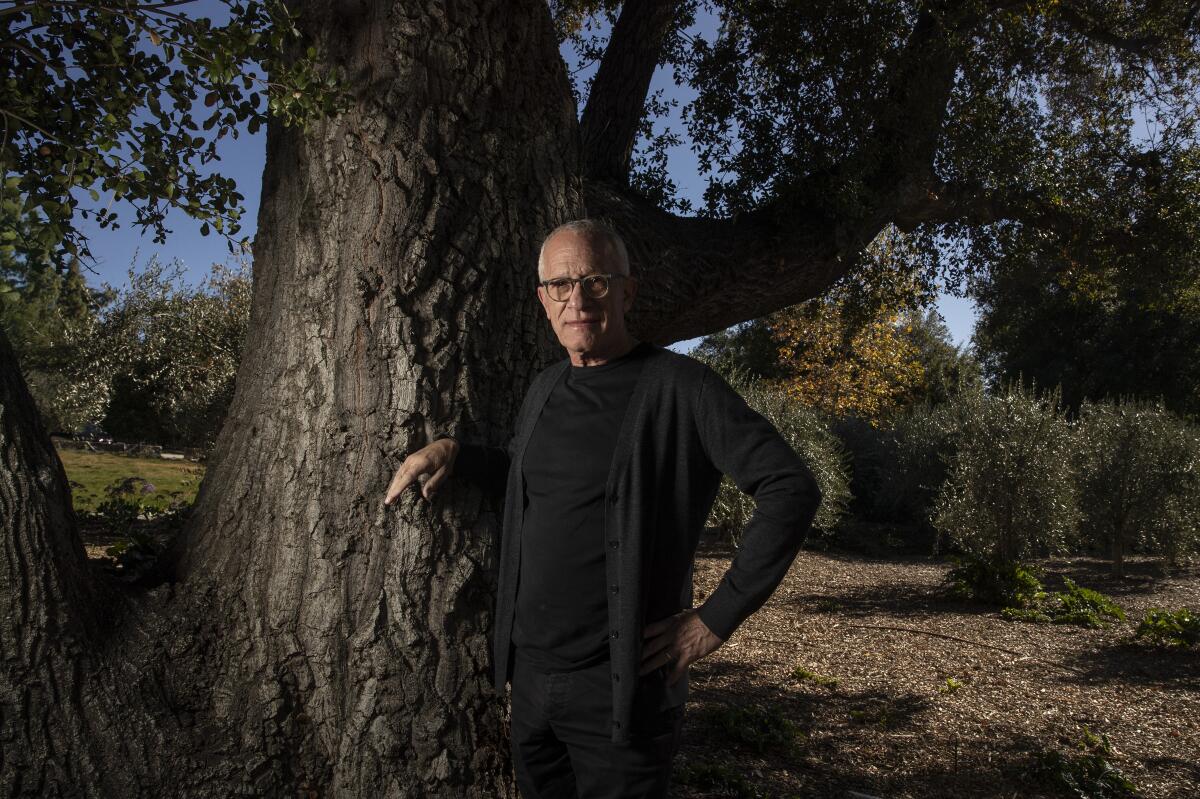‘News of the World’ composer tapped into the broken remnants of the Civil War

- Share via
“News of the World” begins with Capt. Jefferson Kidd, played by Tom Hanks, solemnly reading headlines to a gathering of townsfolk on the American frontier. The country is still severed and aching from the Civil War, and Kidd reports about the 97 souls lost in just two months because of a meningitis epidemic.
James Newton Howard composed the score for the film in 2020, in the thick of the pandemic and the election and the Black Lives Matter movement — so he didn’t have to look too far for inspiration.
The initial concept for the score came from British director Paul Greengrass, helming his first western, who said: “I wanted the score to be a sort of consort of Civil War musicians who’d come back from the war, and all their instruments had been broken, and they’d been broken, you know? The score would be kind of the reforming of this little group and their search for harmony.”
So Howard wrote music for old, hard-to-tune instruments such as the viola da gamba and cello d’amore and gut-string violin. You can hear the struggle and the rub in the playing, like wind blowing against rough terrain.
Kidd finds himself charged with delivering a girl named Johanna, who was taken when her German immigrant family was massacred by a Kiowa tribe only for her adopted indigenous family to then be slaughtered as well. These two orphans — the widowed newsreader and the young survivor — form a unique bond as they travel through a perilous country.
There are action sequences from the “Bourne Supremacy” director along the way, and Howard spent weeks working on a lengthy shootout involving a trio of dirtbags. He pushed himself to score it in an unsafe way, including the anachronistic use of electronics.
“If it’s the right texture, if it’s the right colors, it just works,” he said.
He wrote a simple, hymn-like theme for Kidd, whom Howard saw as “a good man who’s searching for restitution. He’s carrying with him some part of his life that he performed where he didn’t rise to the occasion and feels incredibly guilty and wounded and hurt. And the way he delivers the news, which is in a very kind of quiet voice in a darkened room with candles — it felt almost churchlike to me, and he felt like a bit of a minister.”
Howard, a classically trained pianist and former keyboardist in Elton John’s band, often performs the tune himself.
“I was very leery of playing a lot of piano in the score, because it could be criticized as being too sentimental,” he added. “But playing it in a slightly gospel style, where we played it, I think it succeeded pretty well.”
Greengrass called the score “achingly beautiful.” “Each cue is interpreting that moving from tension to resolution, from bitterness to healing, from division to unity.”
Howard visited with the director and Hanks on location in New Mexico before the pandemic, and — much as he’d been on the Lawrence Kasdan western “Wyatt Earp” in 1994 — was stimulated by the sprawling vistas and giant mythmaking elements of the genre.
Passages of horse-drawn travel are scored with rustic, rambling melody, and there are moments of almost dreamlike poetry — such as when Johanna imploringly shouts to a caravan of Kiowa traveling in the mist of a rainstorm, which Howard accompanies with swelling, rising chords accented with impassioned piano notes.
But “News” is a much more intimate western — small and broken — and there were only a few places where the composer could loose the music to a full gallop. At the climax, after a moment of healing and closure, Kidd urgently races across the land on horseback.
“I do have an opportunity to do something big there,” Howard said. “I really went for it, and I was hoping Paul would like it — and he did. Those kinds of moments really mean a lot to a composer. You kind of sit in the background for most of the film, then you think, ‘OK, I’m going to step out here and hope for the best.’ And when it works, it’s really great.”
Most of the collaboration took place over Zoom, and the score was recorded by masked-and-distanced musicians in London, with Howard directing the sessions remotely from L.A. The desire for healing and unity had rarely felt more urgent.
But making the score that way was “a quite unique, blessed experience, really,” said Greengrass — “oddly, for all the tragedy and trauma that both our countries were going through. There was something intimate and private and creative about what we were having to do whilst locked down.”
More to Read
From the Oscars to the Emmys.
Get the Envelope newsletter for exclusive awards season coverage, behind-the-scenes stories from the Envelope podcast and columnist Glenn Whipp’s must-read analysis.
You may occasionally receive promotional content from the Los Angeles Times.








